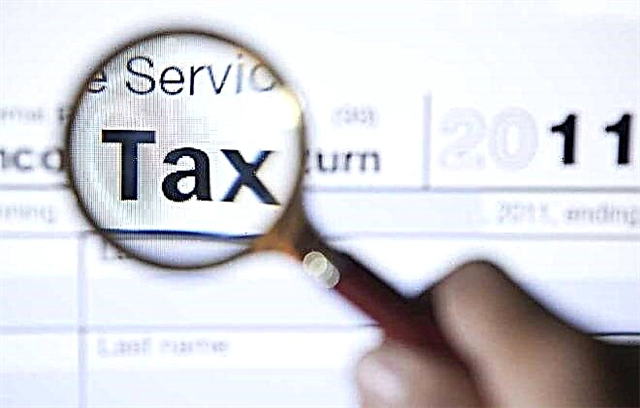Aging of the working-age population is a common problem in developed countries. That is why the system of solidarity pension provision, invented at the end of the 19th century, has ceased to meet the new conditions, when the number of payers of insurance contributions is decreasing and the number of recipients of state benefits is increasing. One of the ways out of this situation is the introduction of a personal savings system. The Estonian authorities have adopted the same principle as a basis: now the pension in Estonia is formed, inter alia, at the expense of the compulsory funded part.

General characteristics
Estonia has not finally abandoned the solidarity system for the formation of pension payments. As a result of the reforms, the country's pension system consists of three stages:
- Compulsory state insurance. Formed at the expense of funds received from the payment of social tax: 33% of the payroll of officially registered employees. From 16 to 20% of the transferred contributions are directed to current payments to modern pensioners. At the expense of the jointly accumulated funds, state benefits are paid to people with disabilities, those who have lost their breadwinner, old-age pensions for permanent residents of Estonia and foreigners staying in the country with a residence permit, as well as a national pension in Estonia (provided for those who do not have the opportunity to prove their insurance record).
- Mandatory funded part. Additional personalized contributions are formed from two sources: 2% of the accrued salary is paid by the future pensioner himself, 4% is paid by the employer (as part of 33% of social tax). Not everyone can automatically join this system. The main condition is that the payer cannot be older than 1983, the rest had to declare their desire to pay contributions until 2021.
- Additional (voluntary) funded part. Until 2021, a person born from 1942 to 1982 could still join the payment of mandatory funded contributions. After October 31, 2021, there is no such opportunity, so those who do not want to be content with the state pension (it is no more than 40% of the average earnings) need to pay additional accumulative pension contributions on their own. Participation in the third pillar of pension insurance allows you to raise the size of your future pension to 65–70% of your current salary.
The Estonian pension system is based on several regulations at once:
- “On State Pension Insurance” - Riikliku pensionikindlustuse seadus;
- “On preferential old-age pensions” - Soodustingimustel vanaduspensionide seadus;
- “On funded pensions” - Kogumispensionide seadus;
- “On social tax” - Sotsiaalmaksuseadus.
Important: from January 1, 2021, the country began a process of gradually increasing the retirement age (until 2021 it will increase to 65 years), various types of benefits are used - three steps. An early and deferred pension is also applied, and a deferred exit is financially encouraged.
Types of benefits
To maintain social stability, the state must provide pensions to the disabled part of the population who has not reached retirement age and is physically unable to pay insurance premiums.
The types of benefits, depending on the circumstances of their appointment, are divided into several categories.
| Pension type | Administrative organization | Payment type |
|---|---|---|
| State (1 step) | Social Insurance Board | · Old-age pension, including early, deferred and preferential; |
| · Loss of a breadwinner; | ||
| · For incapacity for work (disability); | ||
| · National pension (if a person has lived in the country for at least 5 years, but he has no insurance experience); | ||
| Parental allowance for raising children (for each child born from December 31, 1980) | ||
| Accumulative (2nd stage) | Non-state pension funds (mandatory in Estonia) | 6% of the accrued wages are monthly accumulated on the account of the future pensioner, opened in one of the non-state pension funds. |
| Money can be received only after obtaining the right to an old-age pension | ||
| Additional storage part (stage 3) | Insurance companies and banks at the choice of the employee | The accumulated premiums and the earned insurance premium can be paid at any time from the age of 55. The payment can be monthly or issued on a one-time basis (at the request of the client). |
Retirement age
Most European countries are forced to gradually raise the age range for retirement.
How this process takes place, for example, in a neighboring country will be described in the article “Pension in the Republic of Latvia”.
In Estonia, this process began on January 1, 2021. The increment is 3 months, and the scheme is planned in such a way that by 2021 the age bar has risen to 65 years.
The changes will affect those born in 1953 and later.
| Year of birth of the future pensioner | Pension age |
|---|---|
| 1953 | 63 years old |
| 1954 | 63 years and 3 months |
| 1955 | 63 years and 6 months |
| 1956 | 63 years and 9 months |
| 1957 | 64 years old |
| 1958 | 64 years and 3 months |
| 1959 | 64 years and 6 months |
| 1960 | 64 years and 9 months |
| 1961 and older | 65 years |
Early and deferred pension
Only those who have officially worked and paid insurance premiums in Estonia for at least 15 years are entitled to a full old-age pension. The appointment of an old-age pension cannot be canceled even if the pensioner continues to work.
In Estonia, there is an opportunity to go on a well-deserved rest before reaching  retirement age. An early retirement pension comes three years ahead of schedule. Those who fulfill the following conditions can go to it:
retirement age. An early retirement pension comes three years ahead of schedule. Those who fulfill the following conditions can go to it:
- lack of formal employment or self-employment with income;
- there are three years or less left until retirement age;
- insurance experience accumulated in Estonia is 15 years or more.
In case of early termination of employment, the amount of the benefit is reduced by 0.4% for each missed month (even incomplete). So, for a person who declared a desire to receive a pension 11 months earlier, the monthly pension will be cut by 4.4%.
Delayed retirement (applying for benefits after reaching the legal age) is encouraged by the authorities, as it reduces the burden on national funds. As compensation, the state proposes a proportional increase in the size of monthly payments.
If a person postpones the date of retirement, then the old-age pension in Estonia will increase by 0.9% of the deferral originally assigned for each month. For example, for 2 years of work after reaching retirement age (provided that the length of service is sufficient for full payment), the amount of the pension will increase by 21.6%.

In addition, Estonia retained the right to early retirement pension for persons employed in industries with hazardous and harmful working conditions. Retirement in Estonia can be postponed to an earlier date, which depends on the field of employment and the profession of the employee:
- 10 years earlier, the specialists listed in list 1 of the Estonian Government Decision “On approval of the list of types of activities and privileged professions” No. 206 can receive a pension;
- for 5 years - representatives from list No. 2 of the same Resolution;
- regardless of age, but on the fact of accumulating the necessary professional experience, if the person is employed in one of the positions listed in the Law “On Pensions for Seniority” (Väljateenitud aastate pensionide seadus).
| Employment type | Minimum work experience (general), years | Minimum professional experience, years | Retirement date |
|---|---|---|---|
| List No. 1 | 20 | 10 | 10 years ahead of schedule |
| List No. 2 | 25 | 12.5 | 5 years before reaching retirement age |
| Work in the police, security organizations and prison | 25 | 12.5 | Regardless of age, subject to the conditions of experience |
| Mining workers | 25 years for aboveground works, 20 years for underground | ||
| Service on sea and river vessels | 25 years of work in the navy or river fleet | ||
| Employment in the textile industry | 25 years of experience in the profession | 5 years earlier than the general retirement age | |
| Educators and caregivers for the sick and disabled | 25 years of teaching experience or 15 years of work in special institutions | Regardless of age, subject to the conditions of experience | |
| Art workers | 20 years for ballerinas, dancers and circus performers, 25 years for soloists, choir singers and puppeteers | ||
| HIV-infected health workers | Upon infection, if it occurred as a result of performing professional duties | ||
| Public transport workers | 25 years, provided that the employee has worked as a bus, tram or trolleybus driver in a city with a population of 400,000 or more. | 5 years earlier than the established retirement age | |
The procedure for calculating benefits
The periods when the specialist worked part-time or part-time are not counted in the professional experience. Payments are terminated if the specialist decides to resume work in one of the privileged industries.
 Taking into account the reforms carried out, a working person should already think about what kind of pension in Estonia will be paid to him after the end of his professional career. The Law “On State Pensions” stipulates that the amount of accrual for old age consists of three parts:
Taking into account the reforms carried out, a working person should already think about what kind of pension in Estonia will be paid to him after the end of his professional career. The Law “On State Pensions” stipulates that the amount of accrual for old age consists of three parts:
- The main (basic) - fixed for all categories, taking into account the annual indexation from April 1, 2021, is 191.649 euros per month.
- Proportional - depends on the accumulated total work experience until December 31, 1998, multiplied by the cost of the insurance year: the number of years worked until 1999 is multiplied by the annual assessment rate - from April 1, 2021 it will be 6,627 euros for each year of work.
- Insurance - the number of years of payment of social tax, multiplied by the current annual estimate (in 2021 - 6,627 euros).
The Social Insurance Board has developed an online service for those who want to calculate in advance and find out how much the future pension will be.
The benefit accrued upon retirement is subject to annual indexation. For example, the average pension in Estonia in 2021 has increased by almost 7% since April 1 (from 447 to 481 euros per month). The amount of the national pension from April 2021 is 205.21 euros.
The funded part is paid in accordance with the provisions of the agreement signed with the pension fund or insurance company. It can be a pension agreement with a lifetime annuity or a payment for a certain period, when the amount paid during a lifetime is divided by the number of years of survival (the minimum period is 10 years) and added to the state benefit.
If the accumulated amount is less than the national pension multiplied by 10 (when the pension is awarded in 2021 it is 2,052.10 euros), then the applicant can claim a lump sum.
Funds transferred to the pension fund as part of participation in the second and third stages of insurance are legally protected from the risks of bankruptcy of the organization or the termination of its activities for other reasons.
The amount of shares of EUR 10,000 is guaranteed to be refunded, and the part exceeding this amount will be refunded using a coefficient of 0.9. That is, from a 20,000-euro unit, the investor will be refunded 10,000 euros guaranteed and 9,000 euros with the use of a decreasing coefficient.
Take a sociological survey!
Pensions for foreigners
Foreigners who moved to Estonia after reaching the retirement age can transfer the pension they have earned in another country.
Assistance in considering options and choosing a country of departure from the Russian Federation for people of retirement age will be provided by the article “Emigration from Russia: where to leave for a pensioner”.
Russian pension in Estonia is paid on the basis of a personal application submitted before departure to the branch of the Russian Pension Fund at the place of residence or submitted to the Russian Embassy in Estonia (Cabinet of Ministers Resolution No. 1386).
For details on all the nuances of registration and calculation of pension accruals for citizens of the Russian Federation living abroad - in the article "Pensions for Russians living abroad: what you should know about in 2021".
For payments scheduled after 2021, there is a unified procedure for transferring funds for recipients from any country: exclusively in Russian rubles to accounts opened with domestic banks. By 2021, all Russian pension recipients will be issued a MIR card.
If a pensioner living abroad applies for the benefit before 2021, then the payment can be made to a foreign account in the currency that is circulating in the territory of the new country of his permanent residence. For foreign recipients of Russian pensions, an annual confirmation of the fact of being alive is mandatory.
If you do not have the right to receive benefits in another country (you have not worked for an insufficient number of years), then the pension in Estonia for foreigners is calculated according to the data of the Social Insurance Board. If a pensioner earned part of his seniority in Russia, Ukraine, Canada, Great Britain or one of the EU countries, these years will be counted in the total seniority.
Conclusion
In order to ensure that every Estonian pensioner can afford to maintain their usual standard of living after the end of their employment, the Estonian authorities are actively promoting the idea of participating in the voluntary pension insurance system. This will allow a person to keep his income at the level of 65-70% of earnings, while the compulsory state security usually does not exceed 40%.
This is especially true for those who are not covered by the second pillar of insurance (born before 1983 and did not join it voluntarily) or who came to Estonia from abroad.











